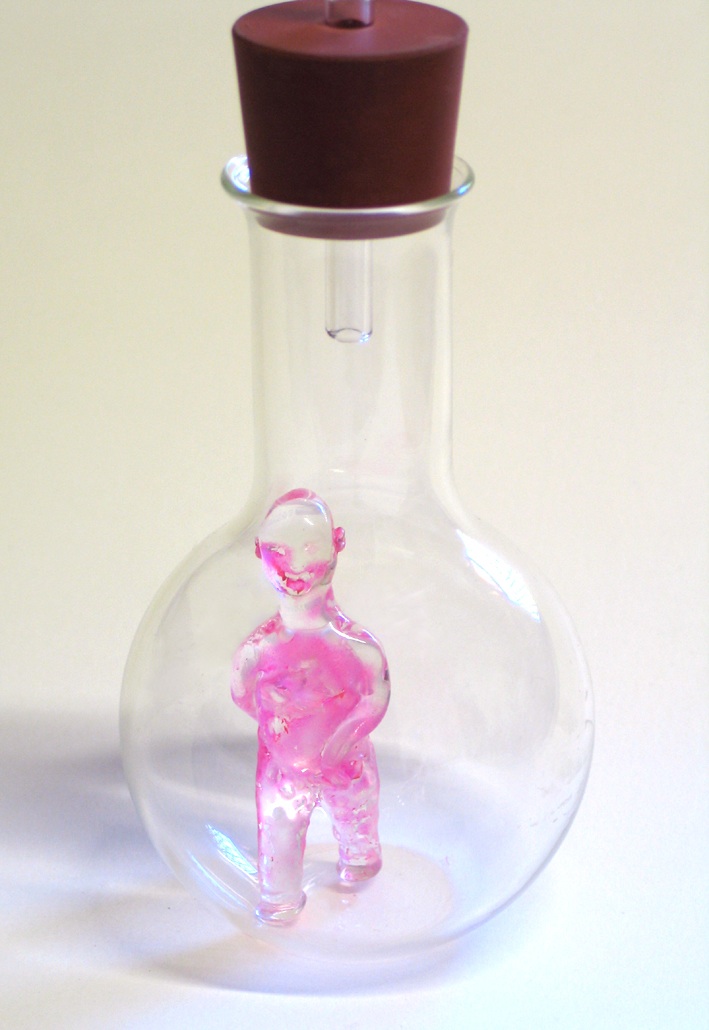March 2006, The Netherlands

Alicia King, 2006
On March 5th I headed to Europe to undertake Residency at the Arts & Genomics Centre, based at the Faculty of Mathematics and Natural Sciences, Leiden Institute of Chemistry, Gorlaeus Laboratories, University of Leiden, The Netherlands. ‘The Centre creates a platform for international artists, scientific researchers and professionals from business and government organisations in the aim to stimulate, initiate and supervise meetings, discussions, collaborations and exchanges’.
Residency at The Arts & Genomics Centre involved research and development into using visual markers to highlight HIV infection in tissue cultured sculptural form. The focus of the project was artistic exploration into the phenomenon of the HIV virus, to create work which will attempt to bridge the gap between the general public and those living with HIV/AIDS. The project also involved collaboration with Australian artist Eden St James.
When I was first offered Residency at the A&G Centre it was well located within Amsterdam itself, however was relocated to Leiden (30mins away by train) in early 2007, and its new director was secured just one week before I arrived. As such, the scientific networks that existed in Amsterdam were only just being forged in Leiden, and the A&G Centre was experiencing some resistance to their presence in the more conservative Leiden. Finding a scientist in the field of Immunology, specializing in visualization techniques took time, and liaison with a number of different organizations.
After contact with various scientists I was directed to Dr Lot de Witte at the Vrij University in Amsterdam. Upon meeting with her she was very helpful in providing various still and moving imagery of the HIV virus, which had been difficult to locate. (Before meeting her I had been informed that there was actually no moving footage of the HIV virus in existence, however she was able to put me into contact with someone who specializes in this field). After a following meeting with de Witte she offered us access in the Vrij University Immunology Labs to carry out the project.
Various methods for realizing the project were discussed, and resulted in the following: To culture the he_la cells over our clear glass army figurines, which would afterwards be infected with the HIV virus. Possibilities for visualizing the infected cells with either GFP (Green Fluorescent Protein) or a coloured enzyme stain were discussed, but after much time and energy spent trying to locate equipment which would enhance the GFP in the HIV cells, it was decided that we’d try the alternative technique, with a coloured enzyme which can be seen with the naked eye.
After a successful test run beginning June 20th , in which we carried out the process using a 24well plate, we set a date for the real thing.
On Tuesday July 10th the army figurines were prepared, seeded with he_la cells and placed in the incubator. A few days later the figurines were infected with HIV, and on Monday July 16th were stained with enzyme, fixed and incubated for 5 hours. By the end of the day when we finally removed to figures from the incubator the cells could be clearly seen with the naked eye. They had not covered the glass uniformly, but in a much more random and sporadic way, giving the figures a camouflaged look, which was totally appropriate, and much more interesting than if they had been uniform.
In conclusion, I feel that it was a really successful project, and also see it as a beginning stage towards a series of video/animation pieces, to be created from footage taken during the residency, and this will begin upon return to Australia. In addition to this I also learnt a lot scientifically about the Virus itself; gaining new skills and understanding. Without the opportunity to undertake this Residency the project would not have been possible.
While at the A&G Centre Adam Zaretsky was also there as a guest lecturer for one term, and invited me to sit in on his classes. I joined the group for two sessions, one of which was an embryology class, in which I learned and performed embryology and microsurgery techniques. Also attending for the day were new media artists Jennifer Willet and Shawn Bailey from Bioteknica (Canada), and Cynthia Verspaget, all of whom I had met previously at SymbioticA.
(Whilst in the Netherlands I also undertook Residency at the Vrij Glas Foundation, Kanaal 10 (where I exhibited at the Dokhuis Gallery), and Foundation B.A.D. In addition to this I met various artists including Hank Schiffermaker, Fred Ables, Aletta de Jong Laurien Dunbar, and Anne Schiffer, as well as the aforementioned Adam Zaretsky, Cynthia Verspaget and Bioteknica, and was interviewed about my work for the international arts website www.transartists.nl).
Read our Filter interview with Alicia where she discusses culturing skin tissue, residencies and the ethics of BioArt.
Tags: bio art, ethics, health visualisation, Research




